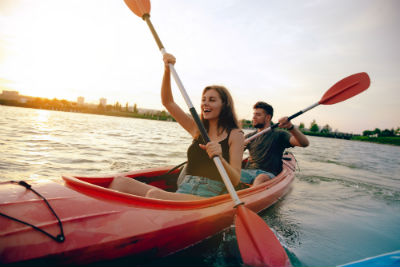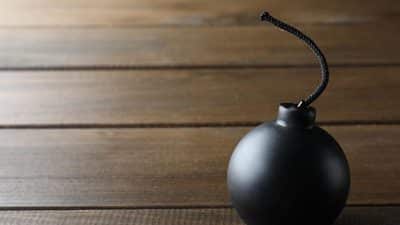
Hitting the wild water trail with no basic precautions is a recipe for disaster. Not that we’re hoping things will go wrong, but you can never be too careful, so why tempt fate?
Outdoor activities, be it hiking, biking, swimming, fishing, and kayaking, all require some planning ahead to ensure you make the most of your time, weather conditions, and enjoyable experience.
If you’re looking for tips and advice on how to prepare for your kayaking adventure, here’s a guide to help you get started:
Know your level of expertise
Kayaking involves rough waters and temperamental weather. This means that you need to have strong enough paddling skills and swimming skills to handle the distance and the roughness. While you don’t need to be an expert swimmer or paddler, this essential skill is required to help you stay afloat or swim to safety if you go overboard or your kayak topples. Never try something new on an unguided trip- always try something new in our kayaking class or with trained experts so that there is an element of guidance and assistance should anything go wrong.
Bring the right gear
Using the right gear ensures comfort and, above all, safety. Some essential equipment is simple to use, whereas some are a little complicated. Before you head on out for your trip, make sure you try them all so you know how to use them.
- A personal flotation device (PFD) is essential. It should always be on and should fit snugly. Never forget this.
- A whistle is also essential, often attached to your PFD. So if you’re in trouble, you can use this to call attention and help.
- A bilge pump is handy when you end up bottom side or if you capsize.
- The paddle float requires some training to use. Usually, a kayak group would come with a group leader that knows how to use it. But it never hurts to know this on your own.
Use the right gear
For any water activity, you need to factor in the possibility of hypothermia. Knowing the water temperature and getting dressed accordingly is vital. The US Coast Guard’s safety recommendations are to wear a wetsuit or drysuit if the water is below 70 degrees Fahrenheit.
Never go alone
It’s undoubtedly lovely to sit in solitude on your https://www.meltontackle.com/kayaks/fishing-kayaks, waiting for your catch of the day. But aren’t experiences the best when they are shared? Even if you are an experienced kayaker, it helps to always take a friend along for the adventure. Having a buddy helps in moments of emergency, as a buddy rescue is faster than a self-rescue or waiting for help. Even when you are kayaking solo on your kayak among a group of other kayakers, make sure to keep your group close. Everyone should be within earshot or a whistle blast of other paddlers at all times.
Check the weather and local conditions
You want favorable weather conditions when you go fishing or kayaking. Nothing dampens an adventure when there’s heavy rain or a hailstorm. Before going on your trip, it’s always good to check the local weather conditions, especially if you’re unfamiliar with the area. Download a weather app that helps you check the weather on your way to the location while on your kayak (make sure it’s in a waterproof bag or case). If the forecast shows that it’s going to rain or the weather doesn’t look promising, then move your trip to another day. Cut the day short if there is a storm that moves in. As always, leave the water immediately if lighting rolls in.
You can also speak to local shops and tourist offices to get some information about the weather. Will it be windy? Are there any underwater currents to be aware of or unexpected swells to keep away from? Check with the agencies that patrol the waters and let them know that you’ll be in the area. Some local government agencies make it mandatory for kayakers and paddlers to register before going to their fishing or swimming spot.
Avoid collisions
It looks like fun banging into other kayaks or just splashing water on nearby paddlers. It’s all fun and games until something serious happens. It’s helpful to know how to spot and be aware of collision courses when you are on the water. Here are some ways to do that:
- Be aware of other vessels on a clock. Your heading is always 12 o’clock. Recheck these vessels’ positions time and again to see whether their clock position has changed.
- Turn your boat to ensure that other vessels move to a position on the clock face. You should also stop and let them pass if they need to. You’re not in a race.
- Kayaking or boating rules dictate that boats are responsible for avoiding you if they are coming from behind.
- Always keep an eye out and make the necessary course corrections if you feel a boat behind you is too close for comfort.
Create a float plan
Float plans are handy for safety and security. Your float plan should contain:
- Who? List the names of everyone in your group and their emergency contact
- Where? Determine the put-in and take-out locations and planned routes
- When? Include launch and return times and when to notify the authorities if you’re late
- What? This action plan is needed in case you are still out past the final deadline.
Who should you give your float plan to? To the person who will miss you the soonest if you’re gone too long, and it’s beneficial if you live with this person. Whether it’s your partner at home, your parents, siblings or a friend- any of them can be your emergency contact so long as they know where you are headed, they have your plan, and they are capable of getting help to you as fast as possible.
It’s also a good idea to keep copies of your plan in your car or your kayak if you get separated from your boat or vehicle.










